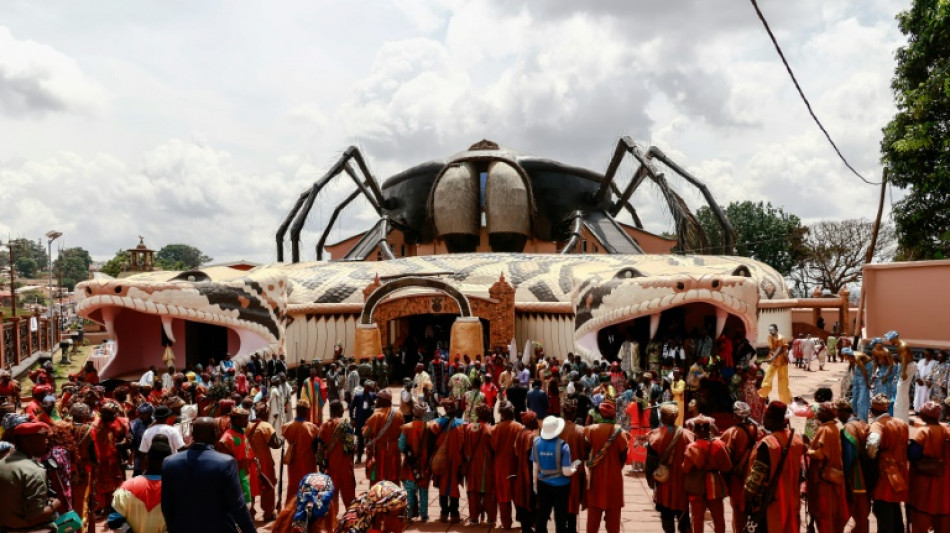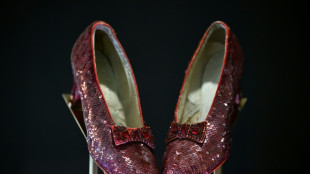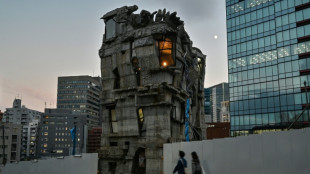

Cameroon opens museum honouring oldest sub-Saharan kingdom
To enter the Museum of the Bamoun Kings in western Cameroon, you have to pass under the fangs of a gigantic two-headed snake -- the highlight of an imposing coat of arms of one of the oldest kingdoms in sub-Saharan Africa.
Thousands of Cameroonians gathered in the royal palace square in Foumban on Saturday to celebrate the opening of the Museum of the Bamoun Kings.
Sultan King Mouhammad Nabil Mforifoum Mbombo Njoya welcomed 2,000 guests to the opening of the museum located in Foumban -- the historic capital of the Bamoun Kings.
The royal family, descendants of a monarchy that dates back six centuries, attended the event dressed in traditional ceremonial attire with colourful boubous and matching fezes.
Griot narrators in multicoloured boubous played drums and long traditional flutes while palace riflemen fired shots to punctuate the arrival of distinguished guests which included ministers and diplomats.
Then, princes and princesses from the Bamoun chieftaincies performed the ritual Ndjah dance in yellow robes and animal masks.
For Cameroon, such a museum dedicated to the history of a kingdom is "unique in its scope", Armand Kpoumie Nchare, author of a book about the Bamoun kingdom, told AFP.
"This is one of the rare kingdoms to have managed to exist and remain authentic, despite the presence of missionaries, merchants and colonial administrators," he said.
The Bamoun kingdom, founded in 1384, is one of the oldest in sub-Saharan Africa.
To honour the Bamoun, the museum was built in the shape of the kingdom's coat of arms.
A spider, which is over 5,000 square metres (54,000 square feet), sits atop the building while the entrances represent the two-headed serpent.
"This is a festival for the Bamoun people. We've come from all over to experience this unique moment," 50-year-old spectator Ben Oumar said.
"It's a proud feeling to attend this event. We've been waiting for it for a long time," civil servant Mahamet Jules Pepore said.
The museum contains 12,500 pieces including weapons, pipes and musical instruments -- only a few of which were previously displayed in the royal palace.
"It reflects the rich, multi-century creativity of these people, both in terms of craftsmanship and art -- Bamoun drawings -- as well as the technological innovations of the peasants at various periods: Mills, wine presses etc," Nchare said.
Also on display are items from the life of the most famous Bamoun King, Ibrahim Njoya, who reigned from 1889 to 1933 and created Bamoune Script, a writing system that contains over 500 syllabic signs.
The museum exhibits his manuscripts and a corn-grinding machine he invented.
"We pay tribute to a king who was simultaneously a guardian and a pioneer... a way for us to be proud of our past in order to build the future" and "show that Africa is not an importer of thoughts," Njoya's great-grandson, the 30-year-old Sultan King Mouhammad said.
To commemorate his grandfather's work, former Sultan King Ibrahim Mbombo Njoya launched the construction of the museum in 2013 after realising the palace rooms were too cramped.
The opening of the museum comes months after the Nguon of the Bamoun people, a set of rituals celebrated in a popular annual festival, joined UNESCO's List of the Intangible Cultural Heritage of Humanity.
A.Uggeri--IM



